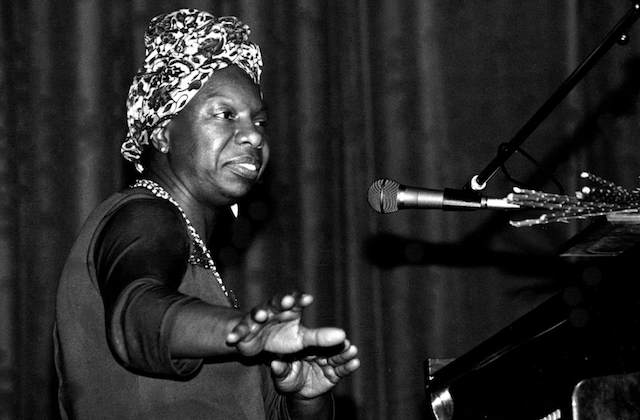How Four Black Artists Joined Forces to Save Nina Simone's Childhood Home

Before she achieved international stardom as a firebrand singer who confronted anti-Blackness in her songs, Nina Simone was Eunice Kathleen Waymon from Tryon, North Carolina. Recognizing an opportunity to protect creative and political history, four prominent Black multidisciplinary artists pooled their resources to purchase Simone's childhood home in the small Southern town. The New York Times profiles Ellen Gallagher, Rashid Johnson, Julie Mehretu and Adam Pendleton's quest to preserve the house in an article and accompanying video published today (March 2).
"It wasn't long after the election that this all began to happen, and I was desperate like a lot of people to be engaged, and this felt like exactly the right way," says Johnson about the artists' joint purchase, which they completed over the last month. "My feeling when I learned that this house existed was just an incredible urgency to make sure it didn't go away."
Simone was born in the three-bedroom house in 1933, and her family lived there and elsewhere in Tryon for much of her childhood. She sometimes criticized the town when discussing it. The Times references an excerpt from her 1992 memoir, "I Put A Spell On You: The Autobiography Of Nina Simon," in which she recalls a formative moment in Tryon: refusing to perform her first public piano recital at age 11 until her parents, forced to the back of the room, could return to their original front row seats. "The day after the recital, I walked around as if I had been flayed," she wrote. "But the skin grew back a little tougher, a little less innocent and a little more Black."
"There are folks here who really don't want the story told because it's still felt that Nina Simone did the town a disservice in turning her back on it," Kevin McIntyre said about the town, which does not readily acknowledge its most famous resident. McIntyre bought the house, which lies near what used to be the Black community's commercial hub, in 2005. He tried to resurrect it as a museum until financial difficulties forced him to relinquish it. "My interest in the house became more of an interest in that history, which I was watching disappear before my eyes as houses got knocked down and fewer people remembered," McIntyre said.
Pendleton learned about the home last year when two acquaintances saw it on the market and suggested he do something with it. Hoping to incorporate other Black artists in its restoration, he then contacted Johnson, Gallagher and Mehretu. The group gathered $95,000 of their own money to purchase it. "We don't have a blueprint for our ideas yet, but I think sometimes artists are the best people to deal with really tricky questions—like, for instance, how to honor the legacy of someone as vital and complicated as Nina Simone," says Pendleton.
"We just hope we can activate this place," says Gallagher of both the house and Tryon. "She formed a lot of who I am and my sense of history. And I think of the town as a portal to a woman who influenced so many."
Watch The Times' video, which features Pendleton walking through and reflecting on the house, above.
